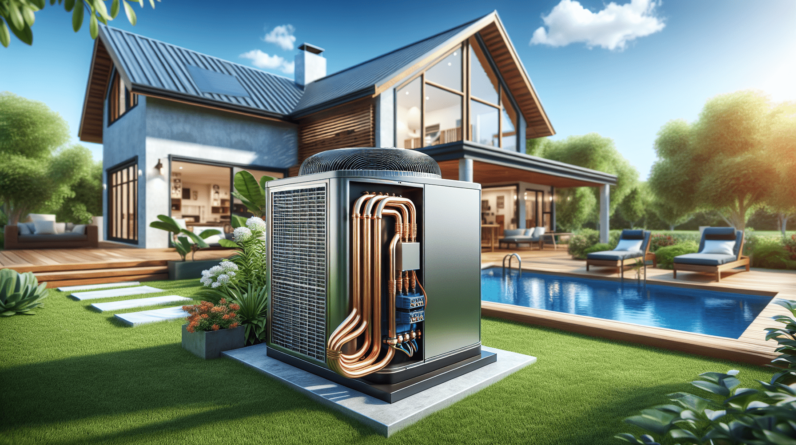
Imagine this scenario: one moment you’re watching your favorite show on television, and the next, all the lights in your house flicker and go out. You quickly discover that your electrical appliances no longer work, and you’re left wondering what could have caused this sudden chaos. Could it be a power surge? And more importantly, can a power surge actually damage your wiring? In this article, we will explore the potential dangers of power surges and how they can impact your electrical wiring. So, sit back, relax, and let’s shed some light on this electrifying topic!
The Basics of Power Surges
Definition of a power surge
A power surge is a brief increase in the electrical voltage flowing through a power outlet or circuit. It typically lasts for less than a second, but during that time, the voltage can spike significantly higher than the standard level. This sudden surge of electrical energy can cause damage to electrical devices, appliances, and even the wiring within a home.
Causes of power surges
There are several factors that can cause power surges. One common cause is lightning strikes, which can send a surge of electricity through power lines and into homes. Power outages and subsequent power restoration can also cause power surges due to the sudden increase in voltage. Additionally, electrical equipment within a home, such as air conditioners or refrigerators, that turn on and off frequently can create power surges within the system.
Types of power surges
Power surges can be categorized into two types: internal and external. Internal power surges occur within a home’s electrical system and are usually caused by appliances or devices turning on and off. External power surges, on the other hand, originate outside the home and are typically caused by lightning, utility company issues, or problems with the electrical grid. Both types of power surges can have detrimental effects on electrical wiring.
Understanding Electrical Wiring
What is electrical wiring?
Electrical wiring refers to the system of insulated conductors, switches, and outlets that distribute electricity throughout a building. It serves as the pathway for electrical current to flow from the main electrical panel to various appliances, lights, and other electrical devices within the home.
Components of electrical wiring
The components of electrical wiring include the main electrical panel, circuit breakers, switches, outlets, and the wiring itself. The main electrical panel is where the electricity enters the building and is distributed to different circuits. Circuit breakers act as safety devices that protect the wiring from overload. Switches and outlets provide control and access to electricity throughout the home.
Importance of proper wiring
Proper wiring is essential for the safe and efficient functioning of electrical systems within a home. It ensures that electricity is distributed evenly and reliably, minimizing the risk of electrical accidents or fires. Additionally, correctly installed and maintained wiring helps prevent power surges and reduces the chances of damage to devices and appliances connected to the electrical system.
Effects of Power Surges on Wiring
Immediate damage to wiring
When a power surge occurs, it can cause immediate damage to the electrical wiring within a home. The sudden increase in voltage can overload the wiring, leading to overheating, melting of insulation, or even complete wiring failure. The severity of the damage depends on the intensity and duration of the power surge.
Potential long-term issues
Even if the wiring does not suffer immediate damage from a power surge, there can be long-term issues. Power surges can weaken the wiring, making it more susceptible to future damage. Over time, the continuous exposure to power surges can degrade the wires, increasing the risk of electrical shorts, arcing, and ultimately, electrical fires.
There are several signs that may indicate surge-related wiring damage. These include flickering lights, electrical outlets or switches that feel warm to the touch, frequently tripped circuit breakers, or a burning smell. If any of these signs are present, it is crucial to address the issue promptly to prevent further damage or potential hazards.
Common Types of Electrical Wiring Damage
Melted wiring insulation
One common type of electrical wiring damage caused by power surges is melted insulation. The excessive heat generated by the power surge can cause the insulation around the wires to melt or deform. This exposes the bare wires, increasing the risk of electrical shocks and short circuits.
Burned or charred wiring
Power surges can also cause the wiring to burn or become charred. The high voltage can generate intense heat, leading to visible signs of burning or charring on the wires. Burned wiring is a serious safety concern and should be addressed immediately to prevent further damage or potential electrical fires.
Frayed or damaged wires
Power surges can cause the wires to become frayed or otherwise damaged. The sudden increase in voltage can weaken the wires, making them more prone to wear and tear. Frayed wires can create resistance, leading to electrical shorts or even arcing, which may result in electrical accidents.
The Role of Voltage and Amperage in Wiring Damage
Effects of high voltage on wiring
High voltage levels during a power surge can have significant detrimental effects on electrical wiring. The excess voltage can overload the wiring, causing it to overheat and potentially melt or burn. Higher voltages can also accelerate the degradation of the wiring and increase the risk of electrical faults.
Effects of high amperage on wiring
While voltage plays a crucial role in damaging wiring, high amperage can also contribute to the deterioration of electrical systems. Amperage represents the amount of electrical current flowing through the wires. Excessive amperage can generate excessive heat, leading to overheating and potential wire damage. It is important to note that voltage and amperage are interrelated, and both factors must be considered when assessing wiring damage.
Relation between voltage and amperage
Voltage and amperage are interconnected and their relationship determines the overall power of an electrical system. Voltage measures the force or pressure of electricity, while amperage represents the flow or quantity of electricity. When voltage increases, it can cause an increase in amperage. Consequently, a power surge with high voltage can result in a corresponding increase in amperage, which poses a higher risk of damaging the wiring within a building.
Protection Measures Against Power Surge Damage
Surge protectors
Surge protectors are devices designed to protect electrical devices and appliances from power surges. They work by redirecting excess voltage to the grounding wire, preventing it from reaching the connected devices. Surge protectors come in various forms, including power strips with built-in surge protection and whole-house surge protectors that safeguard an entire electrical system.
Whole-house surge protection
While individual surge protectors are effective for smaller-scale protection, whole-house surge protection provides comprehensive defense against power surges. Installed at the main electrical panel, whole-house surge protectors intercept and redirect surges before they enter the home’s wiring. This ensures that all electrical devices, appliances, and the wiring itself are shielded from potential damage.
Grounding and bonding
Proper grounding and bonding are essential for electrical systems to withstand power surges. Grounding involves connecting electrical systems to the earth through grounding wires or rods, providing a path for excess electrical energy to dissipate safely. Bonding, on the other hand, ensures that electrical components are adequately connected to prevent differences in electrical potential that could lead to a power surge.

When to Seek Professional Help
DIY vs. professional assessment
While some minor electrical issues can be addressed with DIY measures, it is crucial to seek professional help when dealing with power surge damage and potential wiring problems. Licensed electricians have the expertise and knowledge to thoroughly assess the situation, identify any underlying issues, and provide the necessary repairs or replacements. Attempting to handle complex electrical problems without professional assistance can be dangerous and may lead to further damage or safety hazards.
Warning signs to look out for
Several warning signs may indicate the need to seek professional help for power surge damage. These include frequent or recurring power surges, unexplained power outages, consistently tripped circuit breakers, overheated outlets or switches, and visible signs of wiring damage. If any of these signs are present, it is advisable to contact a licensed electrician to assess the situation and provide the appropriate solutions.
Importance of prompt repairs
Prompt repairs are essential when dealing with power surge damage and wiring issues. Delaying necessary repairs can exacerbate the existing problems, increase the risk of electrical accidents or fires, and potentially result in more extensive and costly repairs. Taking immediate action to address power surge damage ensures the safety and functionality of the electrical system within a home.
Preventing Power Surge Damage
Unplugging devices during storms
One effective way to prevent power surge damage is to unplug electrical devices during storms or times of electrical instability. By disconnecting devices from power outlets, you eliminate the risk of power surges entering the home’s electrical system and damaging the wiring or connected appliances. It is especially important to unplug sensitive electronic devices, such as computers or televisions, as they are more susceptible to surge-related damage.
Power strip usage
Power strips with built-in surge protection can serve as additional safeguards against power surges. Plugging electronic devices into a surge-protected power strip provides an extra layer of defense, redirecting excess voltage away from the connected devices. However, it is important to ensure that the power strip has a sufficient joule rating to handle the potential energy from a power surge.
Avoiding overloading circuits
Overloading circuits is a common cause of power surges and can lead to serious damage to the wiring. To prevent overloading, distribute electrical loads evenly across multiple circuits and avoid plugging too many appliances or devices into a single outlet or power strip. It is advisable to consult a licensed electrician to ensure that the electrical system is properly designed and can handle the electrical demands of the home.
Insurance Coverage for Power Surge Damage
Homeowner’s insurance policies
Some homeowner’s insurance policies provide coverage for power surge damage to electrical wiring. However, the extent of coverage may vary depending on the specific policy and insurance provider. It is essential to review the policy and consult with the insurance company to understand the coverage limits, exclusions, and any additional endorsements or riders that may be required for comprehensive protection.
Electronics and appliances coverage
In addition to the coverage for electrical wiring, homeowner’s insurance policies may include coverage for damaged electronics and appliances caused by power surges. This coverage can help with the cost of repair or replacement of affected devices. As with the wiring coverage, it is important to review the policy and communicate with the insurance company to fully understand the extent of coverage.
Filing an insurance claim
If power surge damage occurs, it is crucial to promptly file an insurance claim to initiate the claims process. Notify the insurance company as soon as possible and provide them with all the necessary documentation and evidence of the damage. This can include photographs, repair estimates, and any other relevant information. Following the insurance company’s procedures and providing accurate information will help ensure a smooth claims process.
Conclusion
Power surges can pose significant risks to electrical wiring within a home. Understanding the basics of power surges, their causes, and the resulting effects on wiring is essential in protecting your electrical system and the safety of your home. By implementing protection measures such as surge protectors, whole-house surge protection, and proper grounding, you can minimize the risk of power surge damage. Additionally, knowing when to seek professional help, taking preventative actions, and understanding insurance coverage can further enhance your ability to mitigate the effects of power surges and maintain a safe and reliable electrical system in your home.






